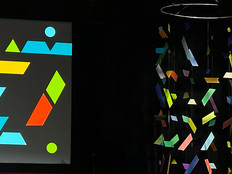Case Western Med School Calls on Microsoft Surface Hub to Further Collaboration
As technology continues to expand, so do the opportunities to help medical schools innovate in how they prepare students to enter the workforce.
The University of Nebraska Medical Center, for example, recently broke ground on a $118.9 million virtual and augmented reality center that aims to offer learners clinical training exercises and surgical skills training in “realistic simulated” environments using VR and AR technologies. The school follows in the footsteps of Western University of Health Sciences in Pomona, Calif., the first school to offer a dedicated VR facility to aspiring medical professionals, which uses technologies like Oculus Rift headsets that allow students to take tours through the human body, as well as iPad devices that contribute to the study of function and motion.
But a huge capital investment in new facilities and technologies is not always warranted or practical. By implementing just a few influential devices, sometimes medical schools can drive huge changes in student ability. This was the case for Cleveland Clinic Lerner College of Medicine (CCLCM), a program from Case Western Reserve University.
SIGN UP: Get more news from the EdTech newsletter in your inbox every two weeks!
Closing Collaboration Gaps with Cutting-Edge Tools
Recently, the school kicked up its effort to make the learning environment for medical students more like real life and to foster a problem-based learning initiative, where students must work together to solve medical cases over the course of a week.
To facilitate collaboration on cases, students use Microsoft OneDrive and shared OneNote notebooks. But, CCLCM educators were looking for even easier ways for students, faculty and staff to share content.
“Ideally, technology should be intuitive and invisible and allow the focus to be on learning,” says Neil Mehta, CCLCM’s assistant dean of education technology, in a Microsoft case study.
To create an environment with seamless team-based learning, CCLCM deployed two Microsoft Surface Hub collaboration devices. The large HD touch screens and digital whiteboard element let students and staff view and annotate online resources as well as their shared OneNote notebooks.
“With the multitouch interface, several group or faculty members can interact at the same time, whether they’re standing at the Surface Hub or using a connected mobile device,” says CWRU instructional designer Brian Yuhnke in the case study.
The Surface Hub also works with Skype to facilitate idea-sharing and conversation.
“Faculty may find it easy to participate whether they’re working from a field site or in the classroom,” says Yuhnke. “We’ve had to piece technical components together just to gain half the functionality that we’ll get with Surface Hub.”
CCLCM has also used the Surface Hub to make echocardiogram videos and MRI images more dynamic, so students feel like they are working on a real case. The collaboration tool can also make it easier for students from all medical disciplines to work together.
“Through videoconferences, our students will be able to work together with pharmacy and nursing students to achieve learning objectives,” says Mehta.
And by using Surface Hub to videoconference with anyone anywhere, the technology doesn’t just serve to bridge disciplinary gaps, it also closes physical ones.
“One advantage of this kind of technology is that by using it, we bring people closer together,” says Chris Sheridan, vice president for marketing and communications at Case Western Reserve University, in the case study. “Everyone can see and speak to each other and compare drawings, ideas and notes in real time, right on the screen.”










